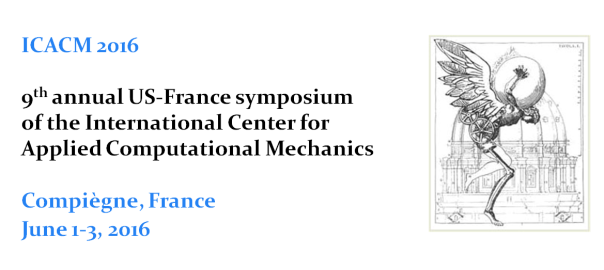Scope
The mechanical behavior of materials is strongly influenced by their microstructure. Hence, progress in material science can be made only by understanding and modeling the link between the microstructure and the material behavior at different scales considering the interfaces. This is the scope of the 9th ICACM2016 symposium where special emphasis is placed on understanding the behavior of heterogeneous materials including porous metallic materials, multi-phase metallic materials, composite materials, oxide-metal systems and hybrid combination of materials.
Different questions will be addressed and discussed, e.g.: What are the relevant scales for gathering data and modeling certain phenomena? Could existing computational mechanics methods describe physical phenomena at the relevant scale? What are the mechanisms that occur at the interfaces in heterogeneous materials? Interfaces include here phase boundaries, oxide-metal interface, fiber-matrix interface, bi-materials interfaces, etc…
Events occurring at elevated temperatures or severe deformation will be also considered thus drawing special attention to the need to better model phase changes in materials. Among the topics of the symposium are image analysis and reconstruction of real materials, statistical characterization of microstructure and its effect on the physical properties of materials, computational methods, homogenization theories. Stochastic approaches and uncertainties will be considered in order to take into account the effects of the microstructural randomness.
Topics
- Plastic localization, ductility and cracking at interfaces
- Interfaces and their impact on microstructure and properties of materials
- Recent advances in characterizing the interface properties
- Solid-state interface diffusion in metals
- Continuum modeling of solid-state interface
- Interfaces in new advanced systems
- Microstructure reconstruction methods and their contribution in understanding the material behavior at lower scales
- Inverse methods for identification
- Uncertainty management : Bayesian, belief functions, reliability
- Reduced Order Modeling and optimization
- Multiscale data to determine the effective macroscopic behavior that account for the complexity of the microstructure
- Plasticity and Fracture mechanisms: role of microstructure
Keywords
Microstructure, Damage, Interface, Computational mechanics, multiphysics…
